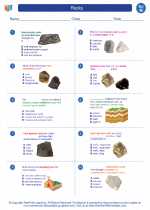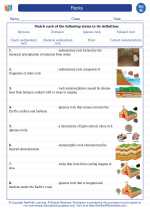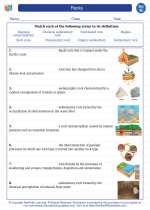Rocks -> hydrosphere
What is the Hydrosphere?
The hydrosphere is the total amount of water on a planet. It includes water in all its forms, such as liquid, solid, and gas, covering about 71% of the Earth's surface.
Components of the Hydrosphere
- Oceans: The largest part of the hydrosphere, containing about 97% of the Earth's water.
- Rivers and Lakes: Bodies of freshwater found on the Earth's surface.
- Glaciers and Ice Caps: Frozen water found at the polar regions and on mountain tops.
- Groundwater: Water stored underground in soil and rock formations.
- Atmospheric Water Vapor: Water in the form of vapor present in the Earth's atmosphere.
Importance of the Hydrosphere
The hydrosphere is essential for sustaining life on Earth. It regulates the Earth's climate, influences weather patterns, supports various ecosystems, and provides a vital resource for human consumption, agriculture, and industry.
Water Cycle
The continuous movement of water on, above, and below the surface of the Earth is known as the water cycle. It involves processes such as evaporation, condensation, precipitation, and runoff, playing a critical role in maintaining the balance of water within the hydrosphere.
Human Impact on the Hydrosphere
Human activities such as pollution, deforestation, and urbanization have significant impacts on the hydrosphere. These activities can lead to water pollution, depletion of freshwater resources, and disruption of natural water cycles, affecting the overall health of the hydrosphere.
Study Tips
To understand the hydrosphere, it is important to study the different forms of water, the water cycle, and the interconnectedness of the hydrosphere with other Earth systems. You can use diagrams, videos, and hands-on experiments to visualize and comprehend the various aspects of the hydrosphere.
[Hydrosphere] Related Worksheets and Study Guides:
.◂Science Worksheets and Study Guides Eighth Grade. Rocks

 Worksheet/Answer key
Worksheet/Answer key
 Worksheet/Answer key
Worksheet/Answer key
 Vocabulary/Answer key
Vocabulary/Answer key
 Vocabulary/Answer key
Vocabulary/Answer key
 Vocabulary/Answer key
Vocabulary/Answer key
